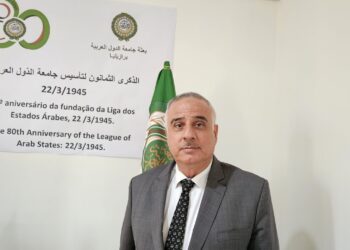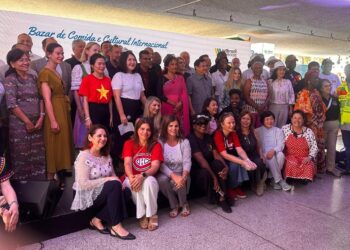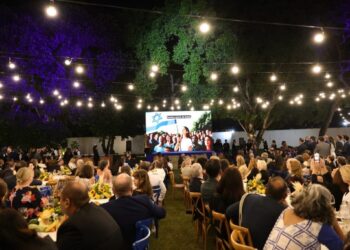As part of the National Day celebrations, the Embassy of Tunisia in Brazil will held the exhibition “Brazil meets Tunisia”. The show will display photographs and pieces of the historical and cultural Tunisian patrimony collection in the Legislative Chamber of the Federal District, in Brasília. The opening happened on Thursday (17), conducted by the ambassador Sabri Bachtobji and by the congresswoman Celina Leão, president of the Legislative Chamber. Diplomats, federal government representatives and guests attended the event.
The visitants of the exhibition will be able to meet this beautiful country placed in the heart of the Mediterranean through photos, craftwork and painting of renowned artists. Tunisia is considered the most rich nation in the world in collection of mosaic.
 Besides photographs about the millenarian history of the country, the show features pieces of handicraft and oil and watercolor paintings made by artists like Bem Marzouk, Mokhtar Hnen, Sonia Drij and Jacques Marmey. These were the artists that have immortalized, through art, sites and landscapes in Tunisia; like Madinah of Tunis and the village of Sidi Bou Said, classified as World Heritage.
Besides photographs about the millenarian history of the country, the show features pieces of handicraft and oil and watercolor paintings made by artists like Bem Marzouk, Mokhtar Hnen, Sonia Drij and Jacques Marmey. These were the artists that have immortalized, through art, sites and landscapes in Tunisia; like Madinah of Tunis and the village of Sidi Bou Said, classified as World Heritage.
Tribute – The ambassador Sabri Bachtobji highlights yet that the exhibition will honor the Bardo Museum – the biggest in Tunisia – with a collection of about eight thousand pieces that date back to prehistory. “The mosaic collection in this museum is the most important in the world”, remembered the ambassador. In there, according to Sabri, there are pieces of the Tusinian patrimony that has great historic and artistic value.
“Our response to the attempt to destroy it is that the Bardo Museum, by its meaningfulness, will continue on its mission to disseminate knowledge; Even more, it will travel around the world coming first to Brasília, in this exhibition”, said the ambassador Sabri Bachtobji, recalling the terrorist attempt that occurred about a year ago.
History – Tunisia is a country in the North Africa, located in the region of Magreb, on the shores of the Mediterranean Sea. It is mostly Arab and Muslim. In March 20th 1956, it conquered independence from France, becoming a democratic republic. Right in the heart of the Mediterranean Sea, called by the Romanians Mare Nostrum, it gave name to the African continent. It was earlier called by ifrigiya. In that country lived various civilizations, like Phoenician-Punic, Romanian, Paleochristian and Arab civilizations. This contact with different cultures led to Tunisian people to be known today for its tolerance and hospitality.
Diplomatic Relations – The diplomatic relations between Brazil and Tunisia have grown in the last years. This March, government representatives of the Ministry of Foreign Affairs of Brazil visited the country for the signature of the terms of cooperation between the two nations. The principal deals are about themes related to the social development and tourism. Besides that, the two countries will enlarge the production and the commerce of eucalyptus, which reached U$ 360 million last year. The exhibition “Brazil meets Tunisia” can be visited from March 17 to 31, from 8 am to 7 pm, in the plenary foyer of the Legislative Chamber.
Tunísia revela sua história e sua beleza
Como parte das comemorações da data nacional, a embaixada da Tunísia no Brasil realiza a exposição “Brasil encontra a Tunísia”. A mostra reúne acervo fotográfico e de peças do patrimônio histórico e cultural tunisiano, na Câmara Legislativa do Distrito Federal, em Brasília. A abertura foi feita, na quinta-feira(17) pelo embaixador Sabri Bachtobji (foto) e pela deputada Celina Leão, presidente da Câmara Legislativa. Diplomatas, representantes do governo federal e convidados prestigiaram o evento.











